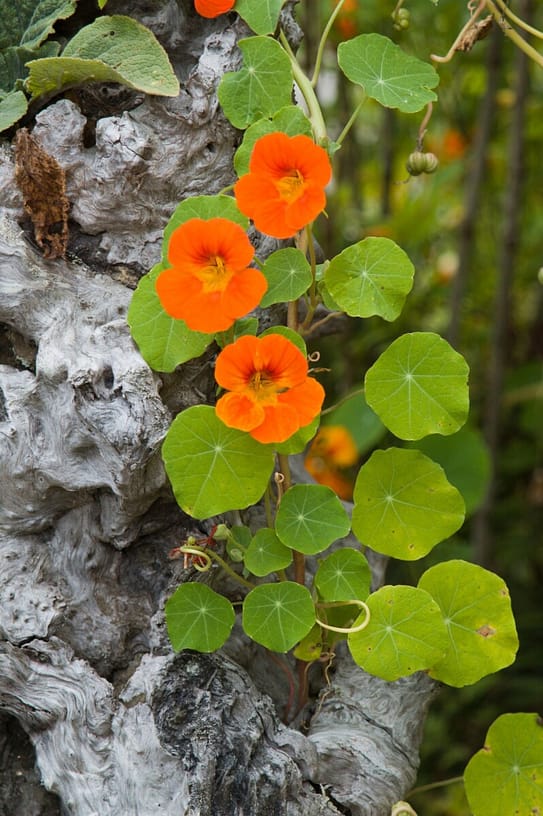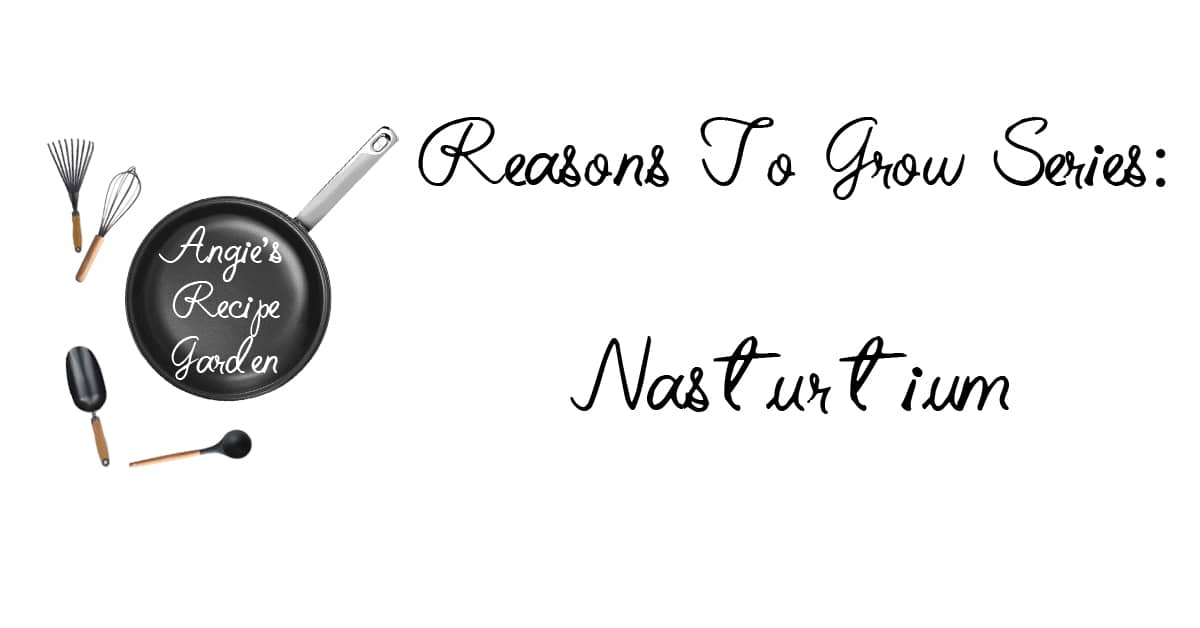Grow Nasturtium This Year And Repel Aphids In The Garden!
Nasturtium is a great plant to grow with many benefits including it’s ability to repel aphids. Continuing my “reasons to grow” series, this week I’ll share why you should plant nasturtium this year.
Adding a pop of bright green leaves and bright colored flowers will add great color to your garden. Flowers come in orange, yellow, white, pink & red. Not only will you add a pop of color to your space, but these flowers, leaves & stems are all edible! They have a peppery taste and go great in salads, stir fries or in pesto.

Repel Aphids & More With Nasturtium
You may be wondering why nasturtium repels bugs. Producing a chemical in order to protect itself from bugs means that this plant will really help your garden. Repelling bugs such as aphids, squash bugs, cabbage loopers and more.
When it comes to planting nasturtium, you may consider companion planting or planting on the border of your garden. This year I’ll be companion planting nasturtium alongside squash, zucchini, kale, radish & potatoes. My hope is that I’ll see much better results this year by planting more strategic nasturtium. Last year I planted a few nasturtium along the border of my garden. Keep reading for tips on how to grow nasturtium.
Tips For Growing Nasturtium
First, you’ll want to choose the type of nasturtium – tall single, trailing, etc. After you’ve selected your nasturtium, you’ll need a little prep time before planting.
In order to plant nasturtium and have it successfully sprout, you need to sandpaper the seeds slightly, or carefully nick the seed. Either method works, you just need to break the skin of the seeds a little bit. This not only speeds up germination, but also can help ensure the seeds will germinate.
A second tip for germinating nasturtium is to soak the seeds at least 8 hours. Soaking the seed helps break down the seeds natural defenses and increases the chances of germinating.
My final tip is to start seeds indoors in the dark. Make sure you maintain constant moisture, a warm environment (about 70 degrees) and don’t forget about them!
Note that I’ve direct sown nasturtium with no prep work and had it germinate. I’ve also done prep work and not had seeds germinate, so the choice is yours!
Interested in more plants you can grow to reduce bugs in your garden? Check out all the posts in this series here.
Follow Me On Social Media To Know When My Next Post Is Live!
Following me on social sites is the easiest & fastest way to not miss a post!


